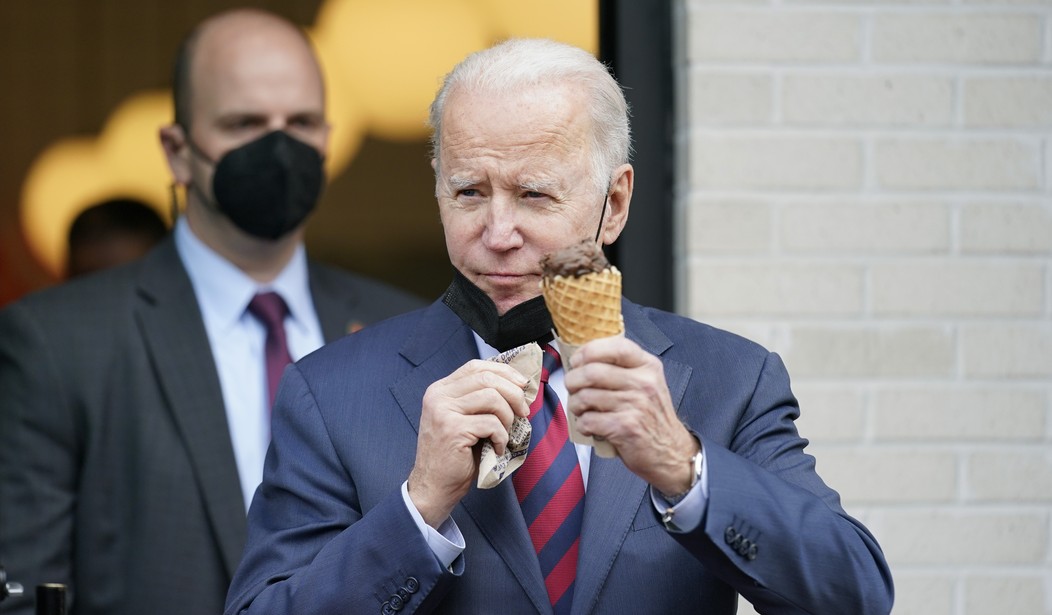Ice cream fanatics rejoice! It turns out that ice cream is good for you, especially for diabetics.
It’s a finding that has been around for a while, but nutrition scientists don’t want to believe it so…they don’t. They won’t talk about it, despite the results being very robust.
It’s a lesson in how science works in the real world, as opposed to the fantasy vision of science we are constantly fed.
Back in 2018, a Harvard doctoral student named Andres Ardisson Korat was presenting his research on the relationship between dairy foods and chronic disease to his thesis committee. One of his studies had led him to an unusual conclusion: Among diabetics, eating half a cup of ice cream a day was associated with a lower risk of heart problems. Needless to say, the idea that a dessert loaded with saturated fat and sugar might actually be good for you raised some eyebrows at the nation’s most influential department of nutrition.
Earlier, the department chair, Frank Hu, had instructed Ardisson Korat to do some further digging: Could his research have been led astray by an artifact of chance, or a hidden source of bias, or a computational error? As Ardisson Korat spelled out on the day of his defense, his debunking efforts had been largely futile. The ice-cream signal was robust.
It was robust, and kind of hilarious. “I do sort of remember the vibe being like, Hahaha, this ice-cream thing won’t go away; that’s pretty funny,” recalled my tipster, who’d attended the presentation. This was obviously not what a budding nutrition expert or his super-credentialed committee members were hoping to discover. “He and his committee had done, like, every type of analysis—they had thrown every possible test at this finding to try to make it go away. And there was nothing they could do to make it go away.”
Apparently Korat’s finding was not the first time that this surprising result has popped up in health research, and given how surprising and welcome the finding is you would think that it would have been shouted from the rooftops, as other surprising and welcome research has. Think “red wine being good for you”-style reporting.
But no. Quite the opposite. The man who made the finding doesn’t even want to come close to discussing it with The Atlantic. Go away!
“There are few plausible biological explanations for these results,” Ardisson Korat wrote in the brief discussion of his “unexpected” finding in his thesis. Something else grabbed my attention, though: The dissertation explained that he’d hardly been the first to observe the shimmer of a health halo around ice cream. Several prior studies, he suggested, had come across a similar effect. Eager to learn more, I reached out to Ardisson Korat for an interview—I emailed him four times—but never heard back. When I contacted Tufts University, where he now works as a scientist, a press aide told me he was “not available for this.” Inevitably, my curiosity took on a different shade: Why wouldn’t a young scientist want to talk with me about his research? Just how much deeper could this bizarre ice-cream thing go?
Harvard, where Korat did his study for which the school gave him his Ph. D., still classifies ice cream “an “indulgent” dairy food that is considered an “every-so-often” treat.” No recognition at all of a finding that was made at their own institution and for which they had awarded an advanced degree.
Hmm. Very odd.
Granted, it could have been a spurious correlation, which happen all the time. But Korat and his advisor did everything they could to disprove it and failed to do so. That is how science should be done, and kudos.
Burying the results, though, is not how science is to be done. Booo!
It turns out that Korat’s findings are hardly unique. It has been known for more than 20 years, and largely ignored because it offends the sensibilities of the nutritionists.
I still to this day don’t have an answer for it,” Mark A. Pereira, an epidemiologist at the University of Minnesota, told me, speaking of the association he’d stumbled upon more than 20 years earlier. “We analyzed the hell out of the data.” …
Pereira had done a study looking at the conventional wisdom regarding dairy foods, and had found that all dairy helped people with diabetes by counteracting insulin resistance. But ice cream, in particular, had a superpower in this regard.
According to the numbers, tucking into a “dairy-based dessert”—a category that included foods such as pudding but consisted, according to Pereira, mainly of ice cream—was associated for overweight people with dramatically reduced odds of developing insulin-resistance syndrome. It was by far the biggest effect seen in the study, 2.5 times the size of what they’d found for milk. “It was pretty astounding,” Pereira told me.
More studies at Harvard have replicated this result, and these studies too were dismissed. Because the finding simply could not be true. How could it be that a high fat high sugar food is actually good for you?
The Harvard researchers didn’t like the ice-cream finding: It seemed wrong. But the same paper had given them another result that they liked much better. The team was going all in on yogurt. With a growing reputation as a boon for microbiomes, yogurt was the anti-ice-cream—the healthy person’s dairy treat.
“Higher intake of yogurt is associated with a reduced risk” of type 2 diabetes, “whereas other dairy foods and consumption of total dairy are not,” the 2014 paper said. “The conclusions weren’t exactly accurately written,” acknowledged Dariush Mozaffarian, the dean of policy at Tufts’s nutrition school and a co-author of the paper, when he revisited the data with me in an interview. “Saying no foods were associated—ice cream was associated.”
Study after study showed that ice cream and yogurt both had positive effects in preventing diabetes, and study after study emphasized the yogurt results and dismissed the ice cream results. Nobody wanted to acknowledge the result, and scientists kept on coming up with ex post facto explanations for why something that seemed ludicrous could not possibly be true.
The evidence itself didn’t matter.
There’s a thing that happens when you start writing a story about how maybe, possibly, believe it or not, ice cream might be sort of good for you, and how some of the world’s top nutritionists gathered evidence supporting that hypothesis but found reasons to look past it. You begin to ask yourself: Am I high on my own ice-cream supply?
I asked the experts for a gut check. Pereira, the first to hit upon the ice-cream effect, told me that it just wasn’t the kind of result that goes down well in the “closed-minded” world of elite nutrition. “They don’t want to see it. They might ponder it for a second and kind of chuckle and not believe it,” he said. “I think that’s related to how much the field of nutritional epidemiology in the modern era is steeped in dogma.” Tobias, the journal editor and member of the 2025 U.S. dietary-guidelines advisory committee, called it “totally fair criticism” to ask why yogurt was played up while ice cream was played down. She expressed support for the Harvard team’s handling of the data, while acknowledging the tensions involved: “You don’t want to overstate stuff that you know probably has a high likelihood of bias, but you also don’t want to do the opposite and seem to be burying it, either.”
But bury that result they have. Because of that dogma. You see the same thing in all human endeavors. And while the scientific method is supposed to filter out such human prejudices, it doesn’t. Sometimes, in fact, the tendency gets reinforced by citing a “consensus.”
Several scientists have said pretty much the same thing about progress in science. It doesn’t advance so much by the accumulation of knowledge as by the death of the old regime. “Science progresses funeral by funeral,” as it were. If you spend your entire career believing and trying to prove something you are unlikely to reverse course.
Hu, the Harvard scientist who has shepherded (and dismissed) the most research showing that ice cream is good for diabetics doesn’t like the result, but when pressed he said:
Hu, the Harvard nutritionist, said that deciding what a study means requires looking beyond the numbers to what is already known about dietary science: “You need to interpret the data in the context of the rest of the literature.” Mozaffarian, Hu’s co-author, echoed this view. Still, he noted, “you’re raising a really, really important point, which is that when, as scientists, we find things that don’t fit our hypotheses, we shouldn’t just dismiss them. We should step back and say, ‘You know, could this actually be true?’ ”
Well duh.
But that isn’t really how our brains work, is it? There are a very few people who are so curious that they embrace and explore the implausible, but science in the last century has done its best to beat them down. I have written about this phenomenon before, and it is one that intellectual historians wonder about: why has the pace of scientific progress slowed?
The answer is complicated, but one of the reasons is that science these days is grant driven, collaborative, dependent upon publishing and peer review, and the old guard has a stranglehold on funding.
There’s more, of course. But when studies or research requires tens of millions of dollars and a whole team, innovative ideas are not selected for. The proponents often frame their studies as groundbreaking, but nobody wants to spent a hundred million or more on something that could fail.
So consensus becomes the norm, and suprising results are rarely welcomed. Physics still welcomes new ideas, although particle physicists get a lot of criticism for spending billions to achieve almost nothing.
Nutrition research, though, is more like climate science than high-level physics. There are no Richard Feynmans, and plenty of Michael Manns hysterically and wrongly declaring things.








